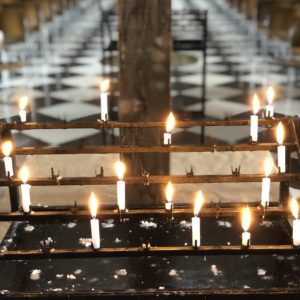
St. Paul’s Cathedral felt profoundly different from the Gothic Westminster Abbey. St Paul’s, rebuilt after the Great Fire by Sir Christopher Wren and officially completed in 1711, is English Baroque style. It gives the impression of being clean and bright as a new penny, with light pouring in clear glass windows, spacious and serene.
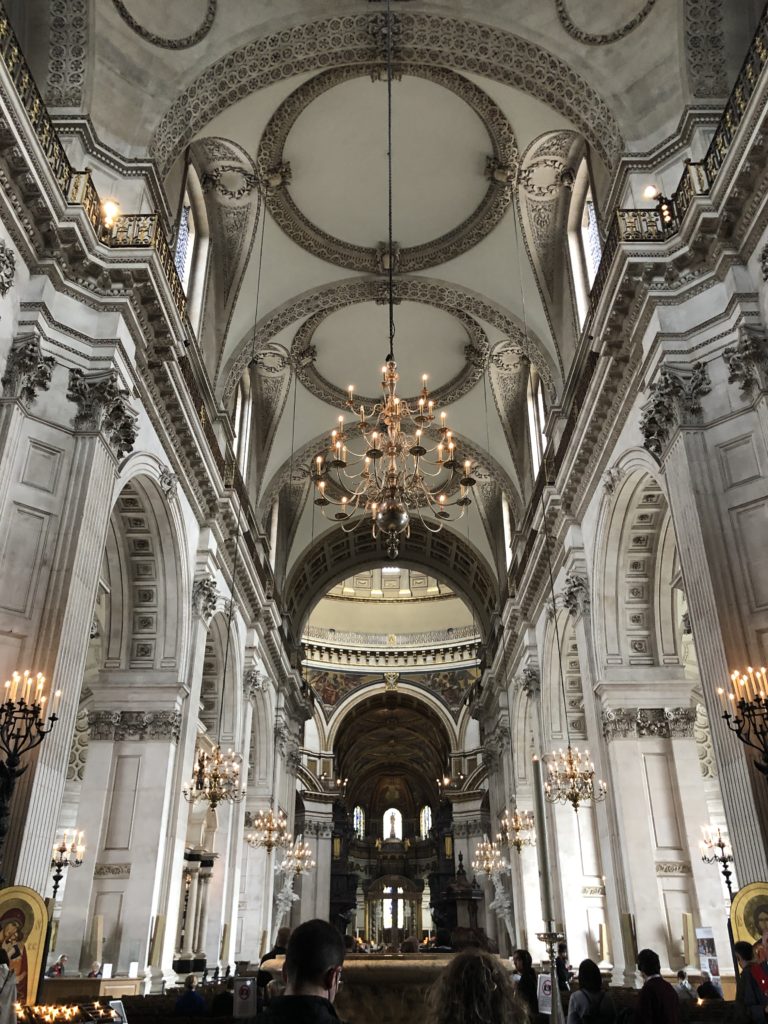
It’s predominantly black and white, not even colored marble.
Apparently, this irritated Queen Victoria, who called it ‘dull, dingy and undevotional,’ donated money from her private purse and told them to brighten it up. Most of the Victorian attempts to add colored marble, stained glass, and mosaics have since been swept away. I don’t know about dull, but I do know there’s a sameness to it. Statue after statue of men noted for their military prowess; generals and campaigners of assorted ranks and more generals, a veritable testosterone-fest.
But where oh where are the ladies? There’s a basrelief of Florence Nightingale down in the crypt, aiding a soldier,
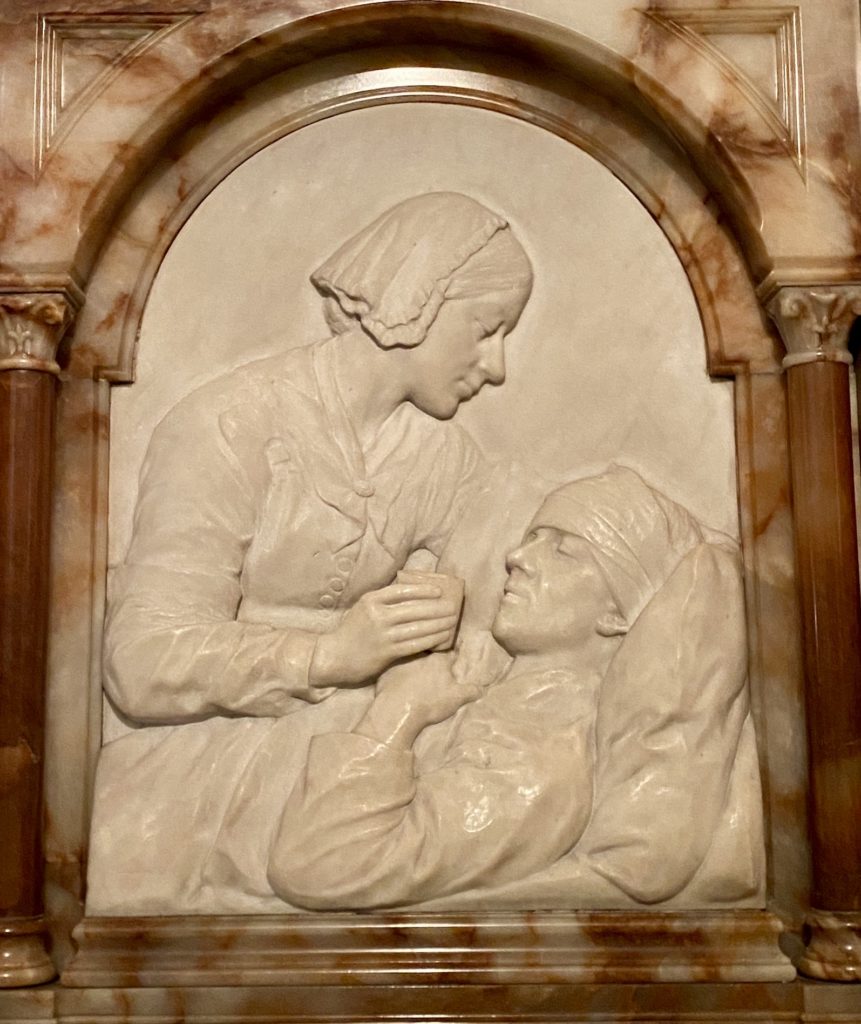
and I saw a few women on the floor tombstones, identified as the wife of so-and-so, daughter of so-and-so. I would pay cash money for a tour of the women who are honored in Saint Paul’s. Just saying.
Oh, and there is one statue of a woman. Queen Anne. She’s outside.
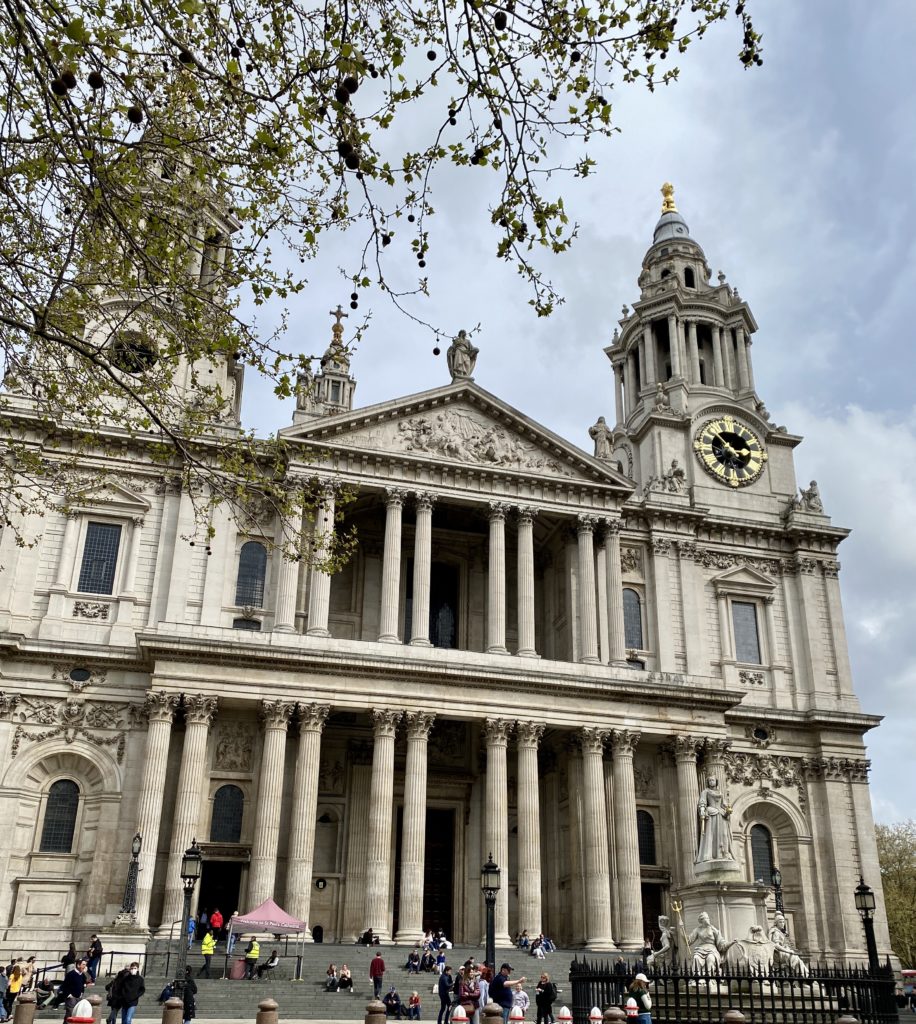
I sought out other memorials in the crypt. To my relief, here were the scientists,
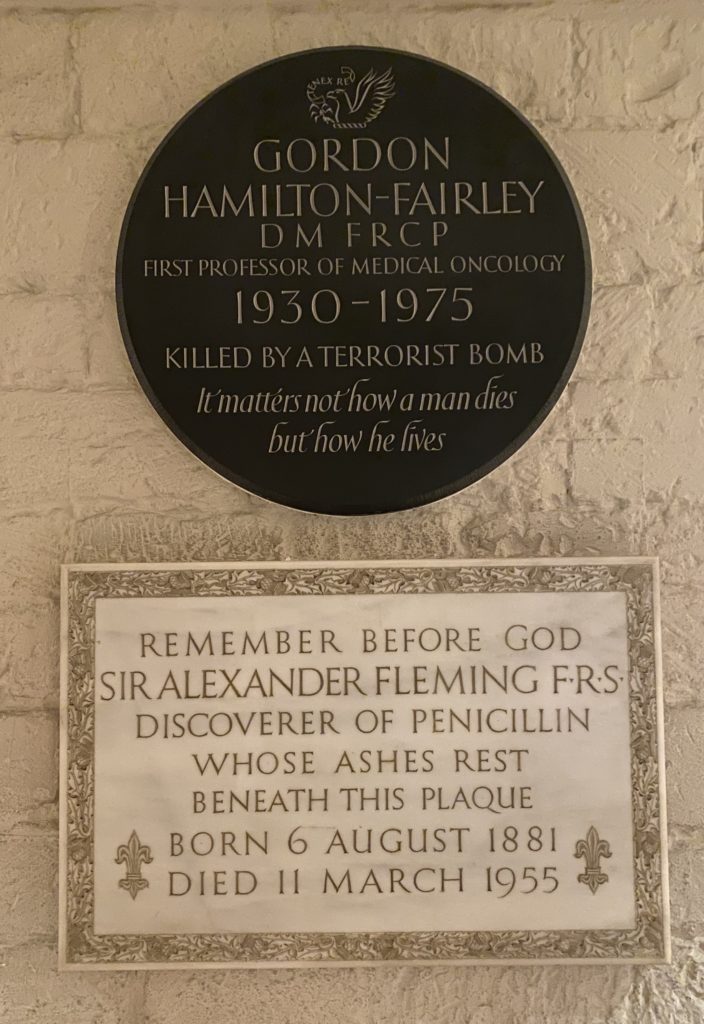
painters and sculptors,
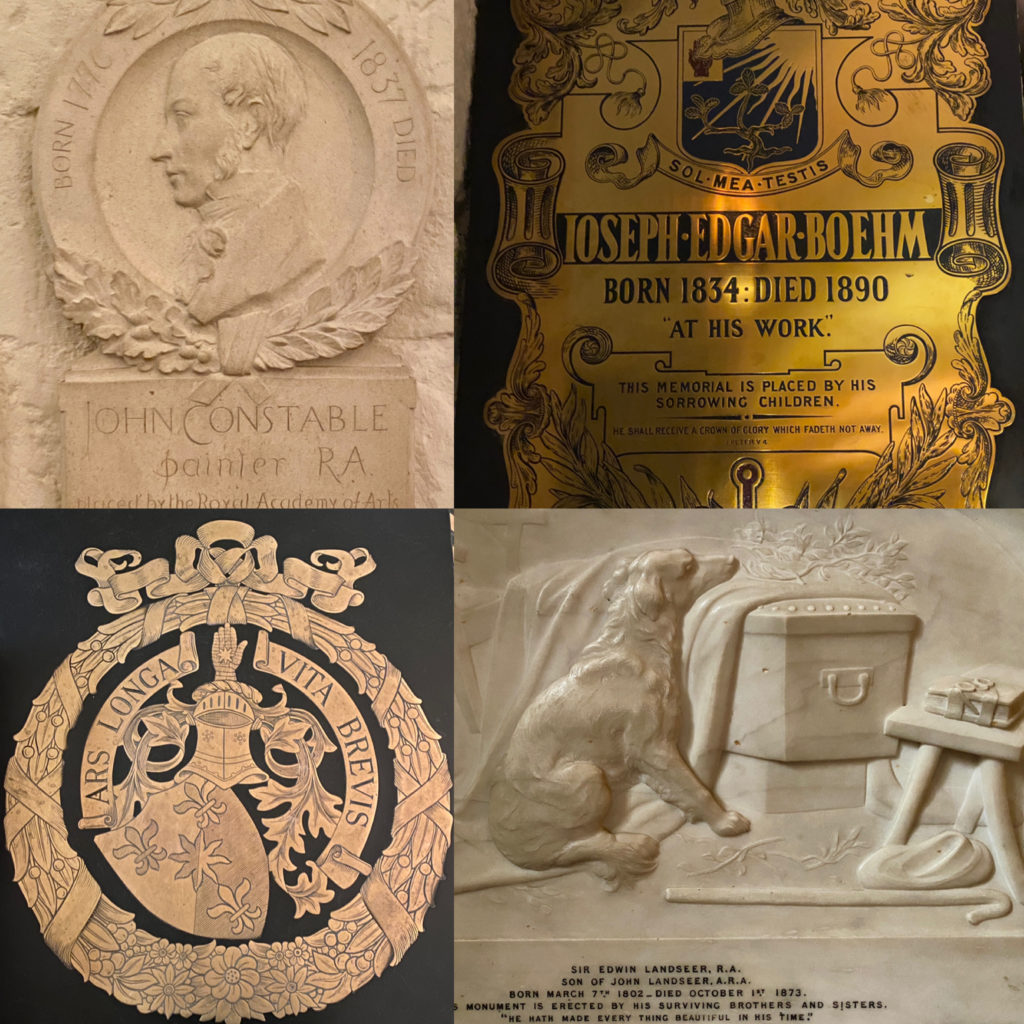
along with musicians, typographers, and a policeman.
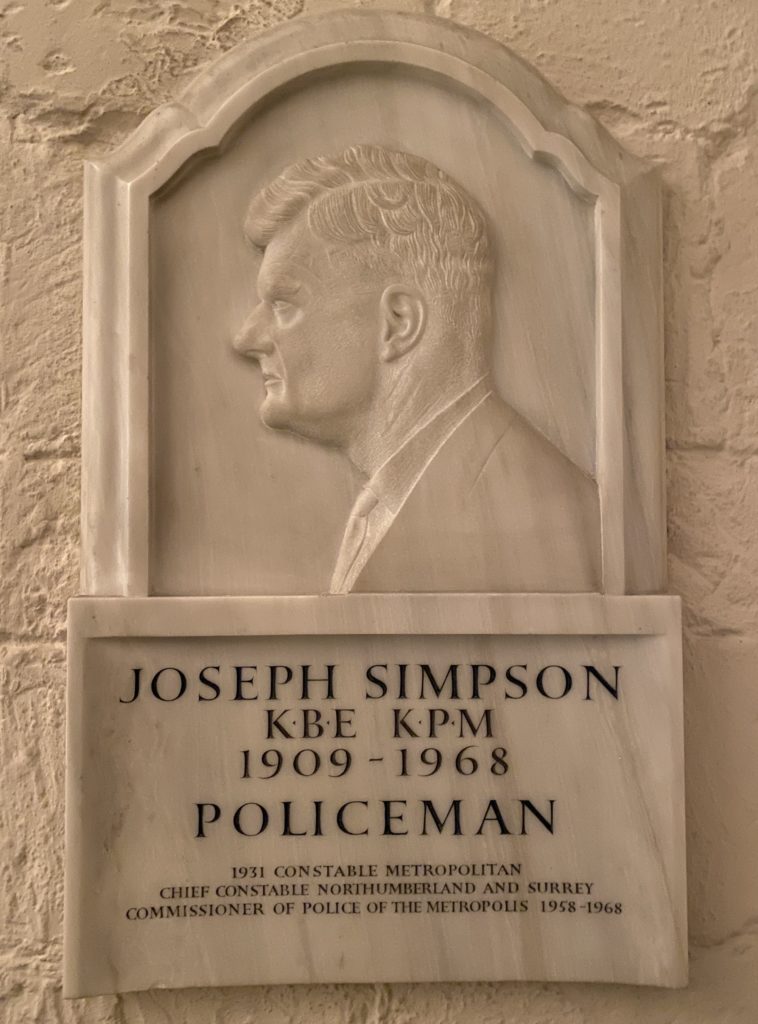
One of my favorite artworks was a painting titled St Martin Divides His Cloak by Hughie O’Donoghue, tucked away in a corner in the Chapel of the Imperial Society of Knights Bachelor.
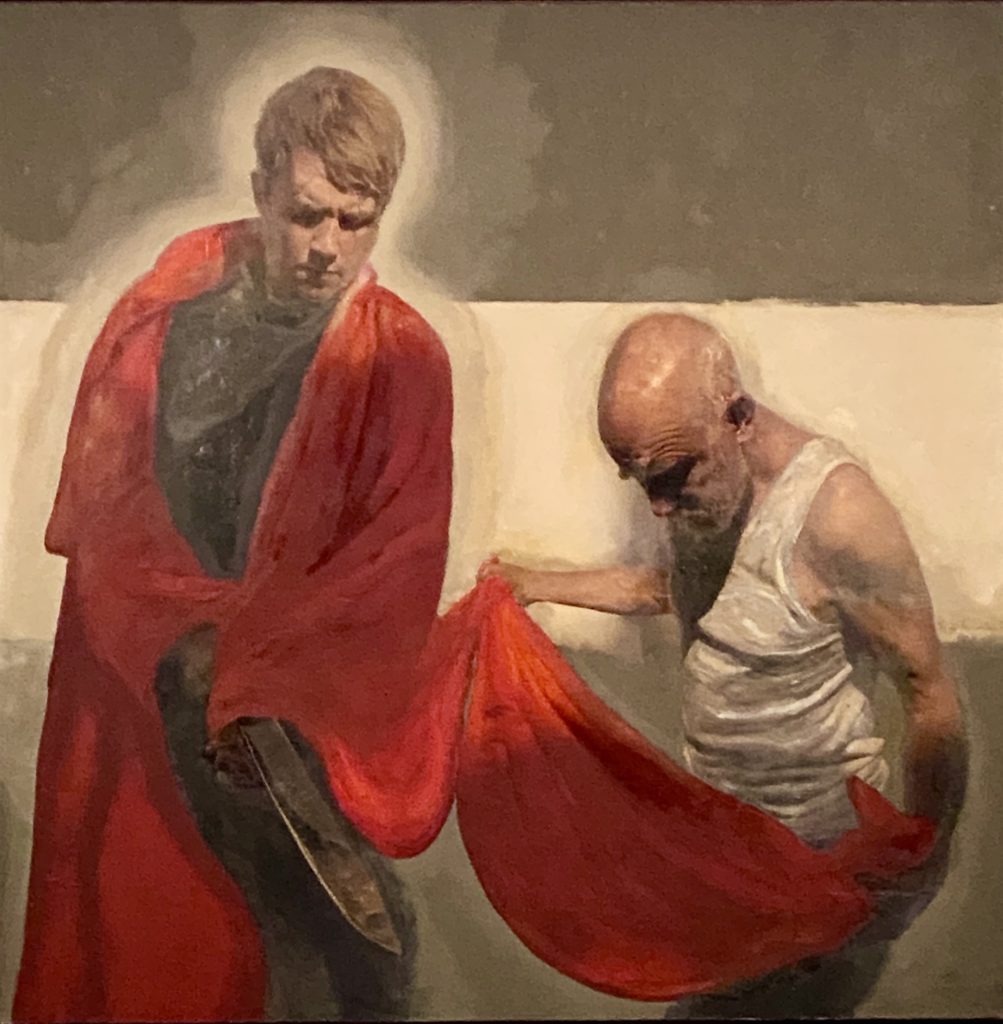
I hustled back upstairs for the Triforium tour and on the way, lit a candle for Maddy.
The docent who led the tour explained it’s like an attic, where you keep things you don’t know quite what to do with, but don’t want to discard. Like this fragile altarpiece made by World War I soldiers who were mentally and physically shattered by warfare. They were given needlework to do as occupational therapy.
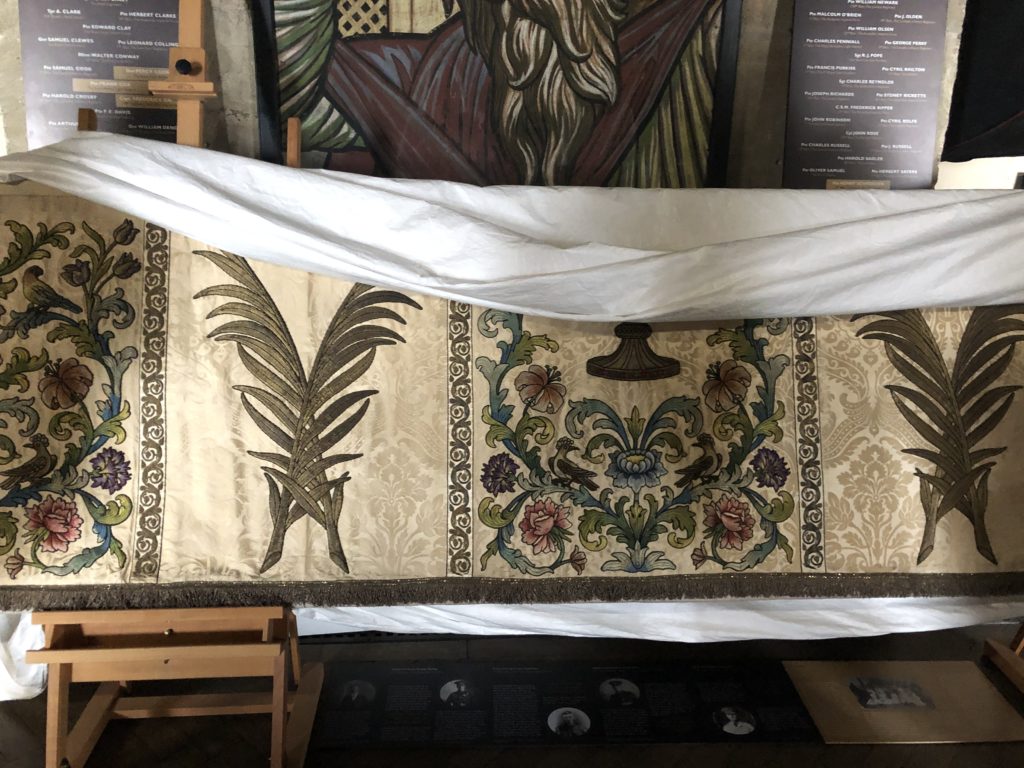
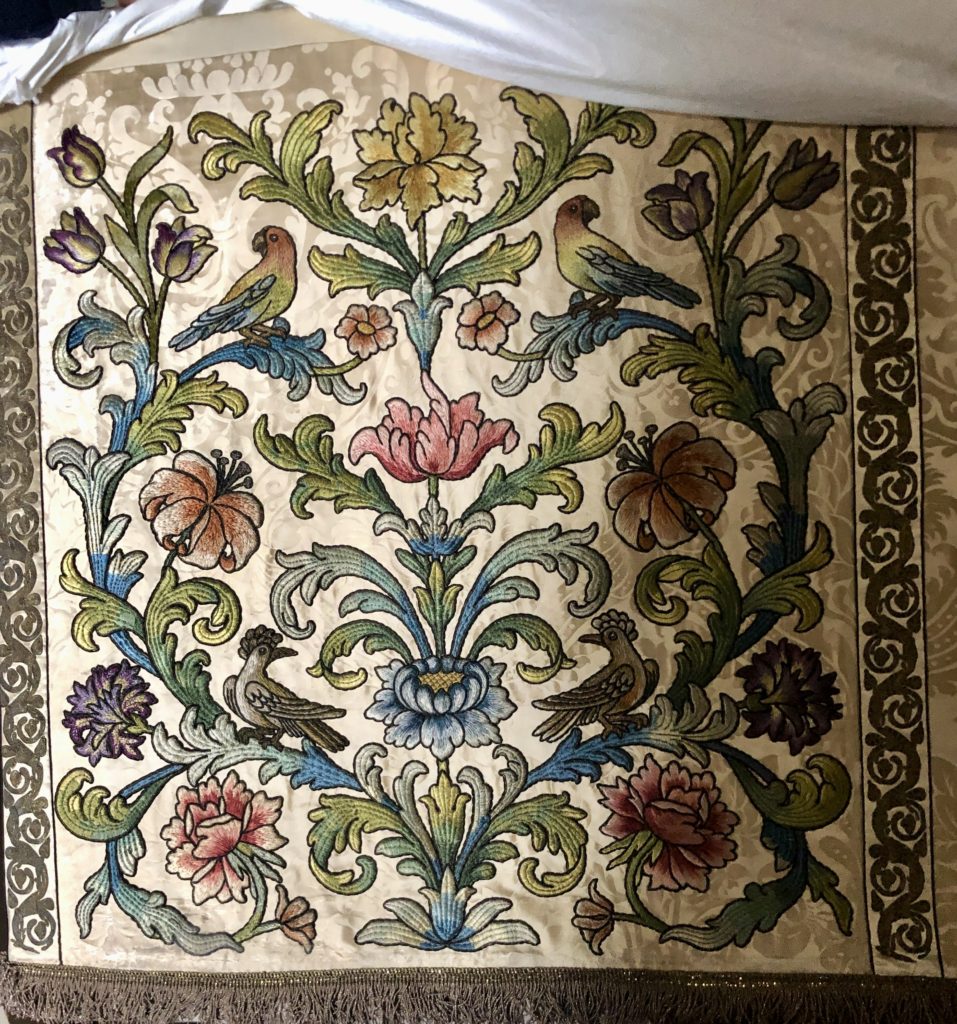
As someone who knits and embroiders, I can confirm the act of plying a needle is very therapeutic.
There’s a contemporary crew of Broiderers (nicknamed the Valkyries) who create the clerical vestments and altar panels. They have a room of their own, located near the graveyard of abandoned pulpits.
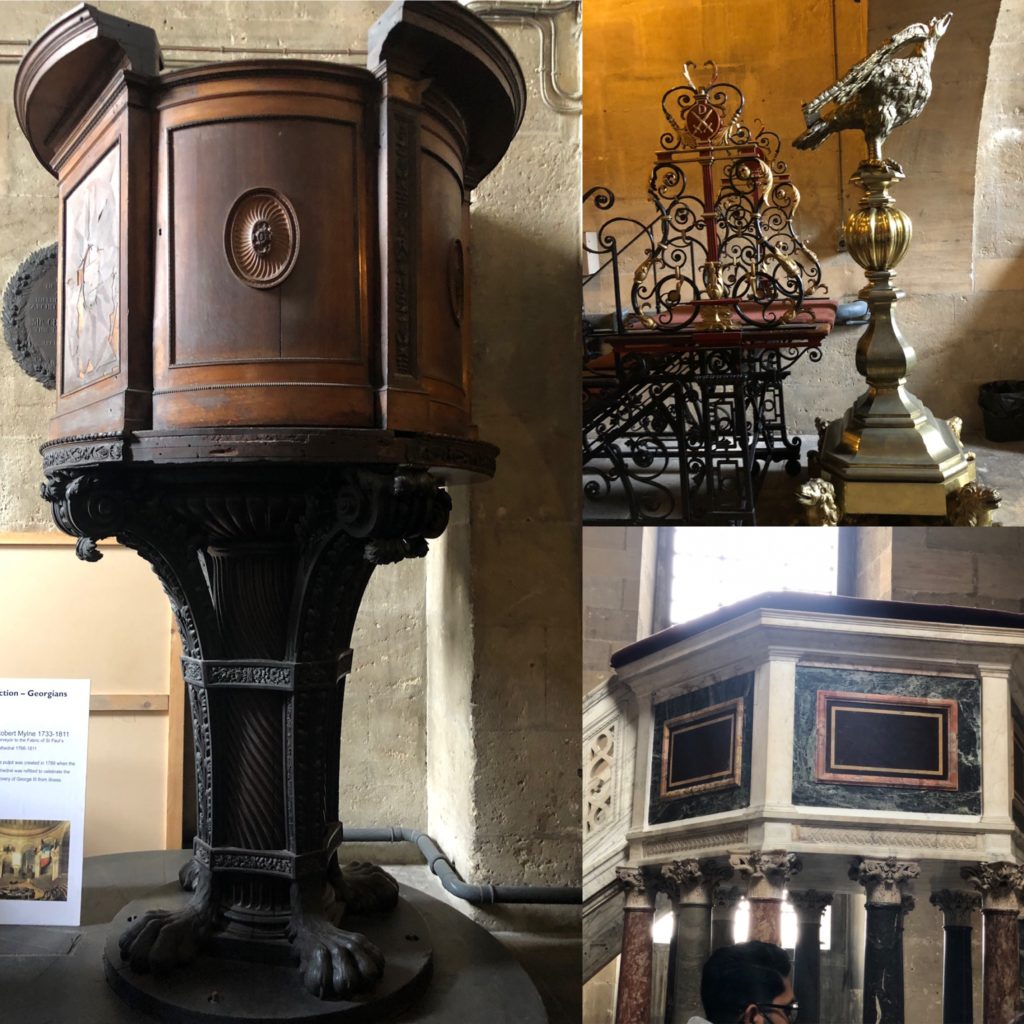
One perplexing note: they stuck the bust of George Cruikshank, an illustrator of Dickens, up here.
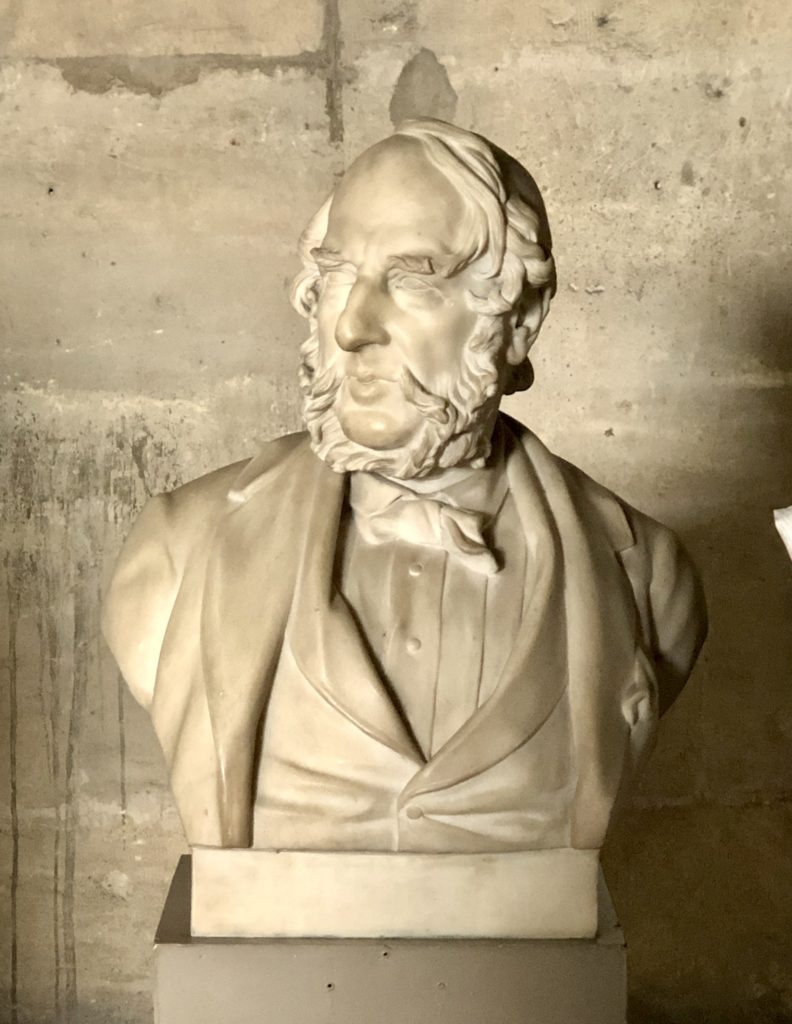
Why? Because they found out he’d had a mistress, a wine cellar, and illegitimate children. Well, bah humbug. Really, compared to, say, the Royals of any era, the man was a bog-standard sinner who created some very fine illustrations.
Everyone wanted to lean over the railing of the magical cantilevered staircase, made infamous by Harry Potter films.
I hiked up to the Stone Gallery. Whirling up in those spiral steps made me a wee bit dizzy and breathless, but there were niches I could step into and catch my breath.
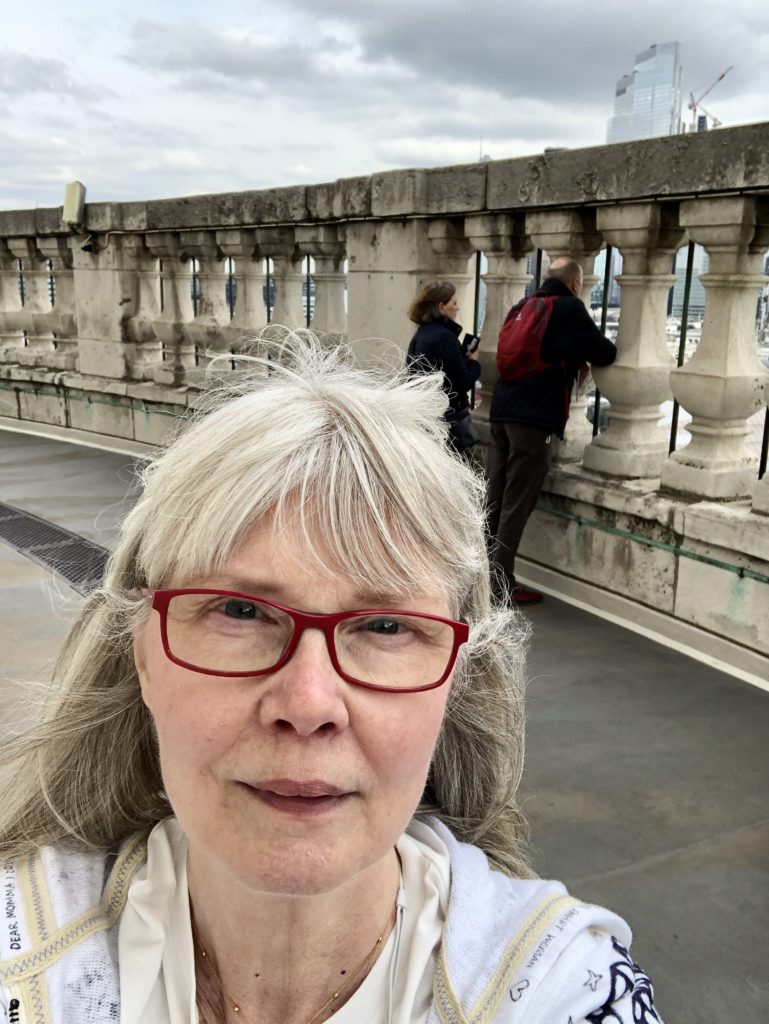
This is how I look after 376 steps.
I saw London laid out below, a royal helicopter flew overhead, and the sun dipped in and out of clouds. Worth it.
Leave a Reply